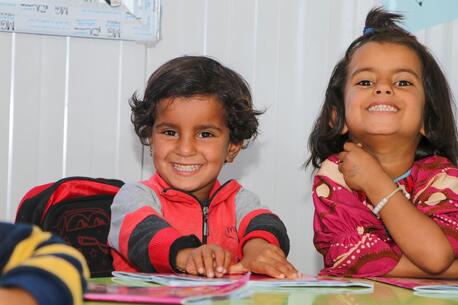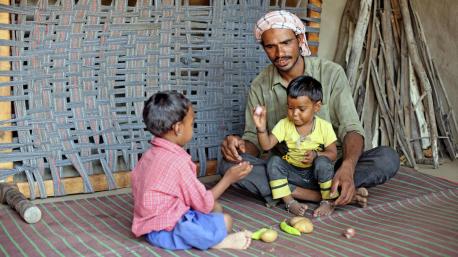
What's Inside a UNICEF Early Childhood Development Kit?
Why UNICEF sends puzzles, puppets and building blocks to children caught in crisis.
An important component of UNICEF's humanitarian aid effort for children in and around Ukraine and other countries in conflict or crisis is its supply operation. UNICEF's ability to rush emergency supplies like water purification tablets, measles vaccines and therapeutic food from its global supply hub in Copenhagen is unparalleled.
UNICEF's emergency response goes well beyond meeting immediate needs for safe water, health care, protection and nutrition, however. Children who have been uprooted and otherwise traumatized by war require other forms of assistance to survive a crisis, and to thrive. They require mental health and psychosocial support. They need help getting back to learning — and getting back to being a child.
UNICEF's Early Childhood Development (ECD) kits are packed with a range of materials specifically for infants, toddlers and pre-school age children and their caregivers, items to keep them playing, interacting and learning, even in the midst of crisis. Puzzles, toys, coloring pencils, building blocks and other items in the kit are essentially tools for promoting healthy growth and psychosocial well-being — and for preserving childhoods.
Here's a look at what's inside that box:
Marieme Diallo Toure, Technical Specialist with UNICEF's Supply Division, says the puppets are one of her favorite items in ECD kits. "The puppets can entertain children, while also helping them to feel better, and become more confident to talk about their feelings with others after a traumatic experience," she says. "As children face into uncertainty, it is vital they have a safe space to play and engage with others — to have some form of normalcy amidst all the turmoil."
Early childhood development programs are core to UNICEF's global efforts to give children their best start in life.
Support UNICEF's efforts to deliver humanitarian aid to children caught in conflict and crisis. Donate today.
TOP PHOTO: On April 27, 2022, 18-month-old Sashko plays with his mother, Kateryna, 27, at UNICEF's "Spilno" Child Spot in Ternopil in western Ukraine, where doctors advise parents on routine immunizations. Play is critical for a child's healthy development, which is why toys are included in the emergency kits shipped from UNICEF's global supply hub. © UNICEF/UN0632241/Pidhayna. Video edited by Tong Su for UNICEF USA
HOW TO HELP
There are many ways to make a difference
War, famine, poverty, natural disasters — threats to the world's children keep coming. But UNICEF won't stop working to keep children healthy and safe.
UNICEF works in over 190 countries and territories — more places than any other children's organization. UNICEF has the world's largest humanitarian warehouse and, when disaster strikes, can get supplies almost anywhere within 72 hours. Constantly innovating, always advocating for a better world for children, UNICEF works to ensure that every child can grow up healthy, educated, protected and respected.
Would you like to help give all children the opportunity to reach their full potential? There are many ways to get involved.





